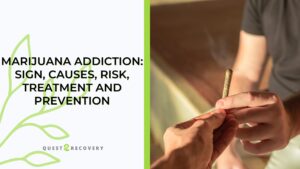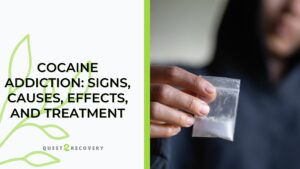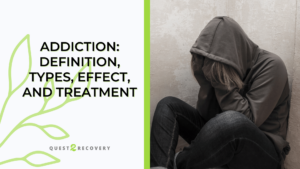Substance abuse disorder, whether it is alcohol use disorder or opioid use disorder, is a complicated and dangerous diagnosis that can wreak havoc on an individual’s physical health, personal life, and professional life. Addiction can occur due to a multitude of factors, including genetics and environmental traits. The decision to take the first drink or experiment with painkillers may initially be a personal choice; addiction itself is not a choice. Addiction is viewed as a medical diagnosis as it has short terms and long-term effects on an individual’s brain and body. Substance use disorder is often referred to as a disability as it negatively affects an individual’s ability to function in society.
Substance use disorders generally begin with occasional recreational use that can quickly turn into an everyday dependence. The individual is prone to severe physical and emotional withdrawals in the absence of the drug and most likely will not have a desire to quit. Substance use disorders often result in financial hardships due to the inability to work, as most places of employment have a zero-tolerance drug policy. Addiction can also break apart families resulting in isolation and loneliness.
Is Substance use disorder a disability?
According to the American Disability Act (ADA), a substance use disorder, whether past or current, qualifies as a disability if the individual has a mental or physical impairment that limits one or more major life activities. Individuals who are struggling with addiction usually have difficulties caring for themselves, which is considered a significant life activity by the ADA.
Unfortunately, our society views an individual with a physical handicap differently than an individual who is struggling with an opioid use disorder. Although both individuals have a disability, the stigma associated with substance use disorders has led to controversial views on who qualifies for disability benefits.
What the government has to say
According to the U.S. government, individuals who are struggling with a substance use disorder can no longer receive disability benefits from the government, even if they have paid into their social security. In other words, the government does not view substance use disorders as a disability, which, unfortunately, has added to the current stigma surrounding addiction.
Before 1996, individuals could be eligible for Social Security disability benefits if they were diagnosed with a substance use disorder. However, Congress eliminated this program, and as a result, individuals who are struggling with addiction can no longer receive this benefit. Without this benefit, it makes it difficult financially for those who are currently in treatment for their addiction, as most treatment programs require an intensive 30-60 day stay where individuals live in residential facilities while undergoing treatment. This means that individuals must step away from their jobs and families to make their recovery journey a first priority.
What the medical community has to say
Therapists, physicians, and medical experts agree that addiction is a disability as it negatively impairs an individual’s ability to function. The medical community does not view addiction as a choice but rather as a disease such as any other medical condition, including diabetes and high blood pressure. As a result, treatment is focused on which usually encompasses medication, therapy, and holistic methods such as yoga and meditation. The goal of treatment is to not only “cure” the addiction but to uncover the underlying triggers that have lead to the addiction. Just like treating any other disability, medical professionals work to get to the root of the disorder.
Food for thought
What if an individual who became paralyzed from a traumatic accident later became addicted to prescription pain medication? What if a young woman suffered an emotionally traumatic experience and has become dependent on sleep medication to fall asleep at night? Most addictions do not begin with individuals wanting to become addicted to opioids, sleep meds, anxiety pills, or alcohol. Substance use disorders occur for so many different reasons, and most of these reasons are unintentional. Many individuals who are physically disabled abuse prescription painkillers and alcohol not only to cope with their physical pain but also to erase their emotional and mental pain that comes with their disability. Disabilities come in all forms, and just because you may not be able to see the physical disability does not necessarily mean that an individual is battling an invisible disability.









